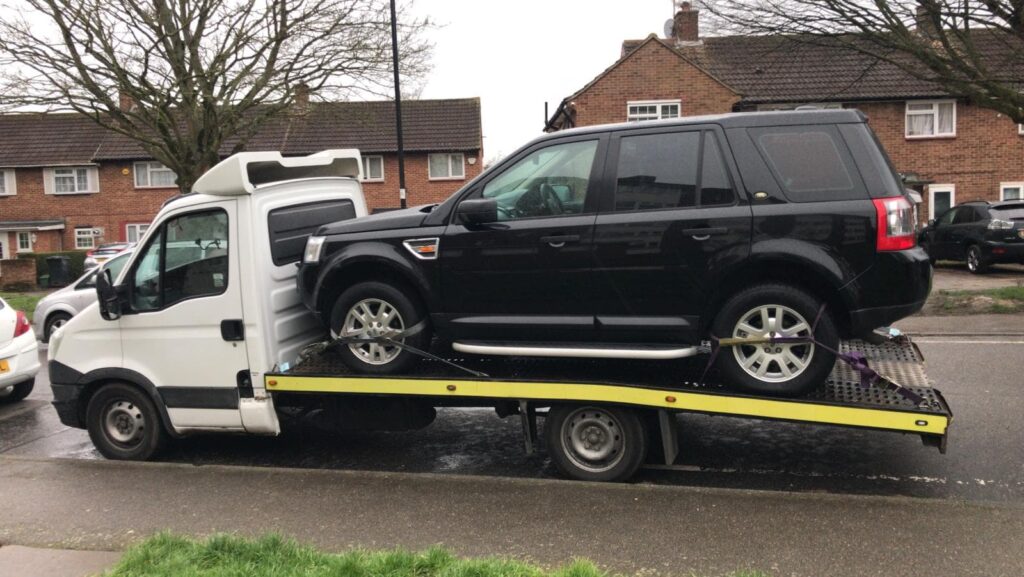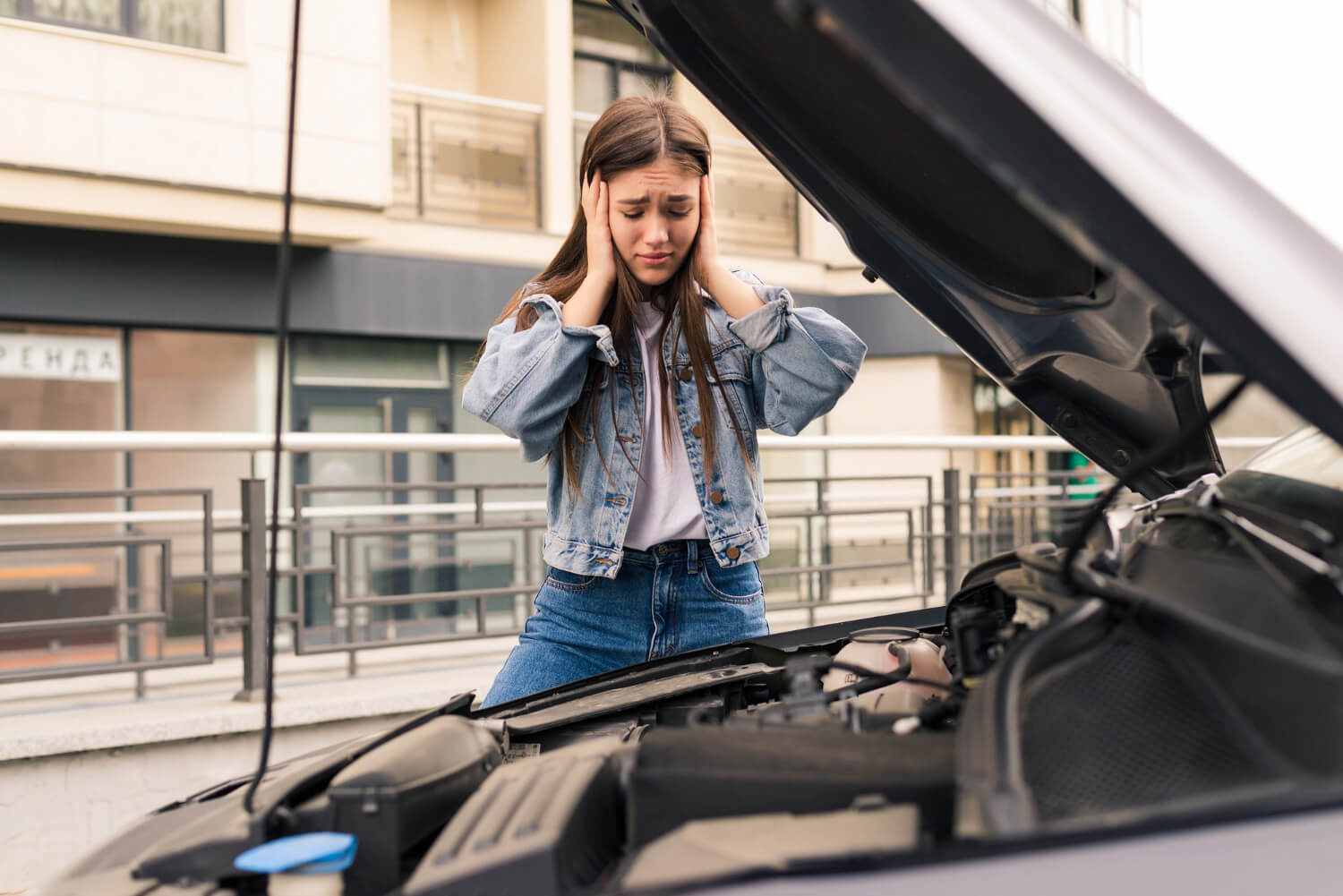Oh no! Your car has broken down, it’s happened to all of us at some point: our car suddenly breaks down, leaving us feeling helpless and stressed. But worry not! With the right knowledge and a calm approach, you can handle this situation like a pro.
Whether it’s a mechanical defect, an electrical issue, or a fuel-related problem, we’ll guide you through the steps to turn this unfortunate event into a smooth experience. First, ensure your safety by pulling over to a safe location. Assess the situation and try to fix any obvious issues like a flat tire or loose battery connection. If you can’t handle it, call roadside assistance or a trusted mechanic for help or you can also get instant service like free car removal or towing.
Understand the Situation: Note Signs and Causes of a Car Breakdown
Here are the signs and cause you need to note to understand the situation:
Identifying the Signs of a Car Breakdown
When it comes to car breakdowns, it’s crucial to be proactive in recognizing the warning signs. By familiarising yourself with these indications, you can address potential issues before they expand into a full-blown breakdown. Look out for:
- Strange Noises: Unusual sounds like clunking, grinding, or squealing could indicate mechanical problems.
- Warning Lights: Pay attention to dashboard warning lights, such as the check engine light, ABS light, or battery indicator, as they often signify underlying issues.
- Vibrations or Shaking: Excessive vibrations or shaking while driving might indicate problems with the tires, suspension, or engine components.
- Unresponsive Brakes: If your brakes feel spongy, take longer to respond, or produce grinding noises, it’s time to get them checked.
- Engine Overheating: An overheating engine can be caused by coolant leaks, a malfunctioning radiator, or a faulty regulator. Keep an eye on the temperature gauge.

Identify the Problem
| 1. Mechanical Issues | – Flat tire: Check for punctures or low tire pressure.
– Engine overheating: Look for signs of excessive steam or a rising temperature gauge. – Transmission failure: Difficulty shifting gears or slipping transmission points to this issue. – Broken belts or hoses: Inspect for any visible damage or signs of wear |
|
2. Electrical Problems
|
– Dead battery: If your car won’t start and you hear a clicking noise, it’s likely a drained battery.
– Faulty alternator: Dim headlights or a flickering electrical system could indicate alternator failure. – Ignition system failure: Issues with the starter motor or ignition switch can prevent your car from starting. |
|
3. Fuel-Related Issues
|
– Empty fuel tank: It’s embarrassing but easily solved by refuelling.
– Clogged fuel filter: Poor engine performance and stalling could be due to a clogged filter. – Fuel pump failure: If the engine sputters or won’t start, a malfunctioning fuel pump could be the cause. |
By recognizing these signs and understanding potential causes, you can better assess the problem and communicate it effectively to the professionals who can assist you. Remember, diagnosing the issue is the first step towards resolving your car breakdown like a true pro!
Assessing the Problem
When your car breaks down, it’s essential to assess the situation accurately to determine the next steps. Here’s what you need to do:
Checking for obvious signs of damage:
– Look for any visible signs of damage, such as leaks, loose wires, or broken belts.
– Check the dashboard for warning lights or error messages.
– Listen for unusual sounds like grinding, knocking, or squealing.
Contacting roadside assistance or emergency services:
If you’re unable to identify the problem or it requires professional assistance, reach out to roadside assistance or emergency services. Provide them with your location, a brief description of the issue, and any relevant details they may need.
Basic troubleshooting steps to try on your own:
- Ensure the car is in park or neutral and the emergency brake is engaged before attempting any troubleshooting.
- Check the battery connections for corrosion or loose cables. Tighten or clean them if necessary.
- Verify that there’s enough fuel in the tank, especially if the fuel gauge appears low.
- If your car has a manual transmission, check the clutch pedal for proper engagement.
- Restart the engine or try jump-starting if you suspect a dead battery.
- If you have a flat tire, consult your car manual for instructions on how to change it safely.
Remember, these troubleshooting steps are meant for simple issues and should be performed only if you’re confident and comfortable doing so. If in doubt, it’s always best to seek professional assistance.
The Key to Smooth Car Breakdown Resolutions: Communicating Effectively
When your car breaks down, clear and accurate communication is vital for a swift resolution. When contacting the towing company or mechanic, make sure to provide them with detailed information about your location, the nature of the problem, and any observable symptoms. By describing the situation accurately, you help them better understand the issue and come prepared with the necessary tools or expertise.
Asking Questions about Estimated Arrival Times and Fees
Don’t hesitate to ask questions when speaking with the towing company or mechanic. Inquire about the estimated arrival time so you can plan accordingly and manage your expectations. Additionally, it’s important to discuss the anticipated fees or charges upfront. By clarifying these details, you avoid surprises and ensure a transparent transaction.
Documenting Important Details for Insurance Purposes
In the unfortunate event that your car breakdown leads to an insurance claim, proper documentation becomes crucial. Take the initiative to record essential details such as the time and date of the breakdown, the location, and any relevant conversations you’ve had with the towing company or mechanic. These records serve as evidence and can help expedite the insurance process, ensuring a smoother and quicker resolution.
Expert Tips to Navigate Car Breakdowns with Ease and Confidence
Staying Safe: Protecting Yourself and Others
- Find a safe location to pull over: Look for a wide shoulder, parking lot, or a designated breakdown lane away from traffic.
- Use hazard lights and warning signs: Alert other drivers by turning on your hazard lights and placing reflective warning signs behind your vehicle.
- Exit the vehicle safely: Ensure everyone exits the car from the side facing away from traffic, and stand at a safe distance from the road.
Preparing for a Breakdown: Be Prepared for the Unexpected
- Regular car maintenance: Stay proactive by following the manufacturer’s recommended maintenance schedule to reduce the chances of a breakdown.
- Assemble a breakdown kit: Include essentials like a flashlight, jumper cables, a spare tire, tools, water, snacks, and a first-aid kit in case of emergencies.
- Keep emergency contact numbers handy: Store important numbers, such as roadside assistance and your insurance company, in your phone or write them down.
Alternatives to Towing: Exploring Other Options
- Contact a nearby garage or mechanic: If the issue seems minor, consider reaching out to a local professional who may be able to assist you without towing the vehicle.
- Seek assistance from fellow motorists: Sometimes a kind stranger may be willing to lend a hand or provide helpful advice.
- Utilise roadside assistance programs: Many insurance companies offer roadside assistance programs that can provide services such as jump-starting a battery or providing a fuel refill.
Preventing Future Breakdowns: Stay Ahead of the Curve
- Regular inspections and maintenance: Schedule routine check-ups and inspections to catch potential issues early and address them promptly.
- Follow manufacturer’s guidelines: Adhere to the recommended service intervals for oil changes, filter replacements, and other maintenance tasks.
- Understand warning signs: Pay attention to any strange noises, vibrations, or dashboard warning lights and have them checked out as soon as possible.
By following these expert tips, you’ll be better equipped to handle a car breakdown calmly and efficiently. Remember, staying safe, being prepared, exploring alternatives, and taking preventive measures are key to keeping your car running smoothly and minimising breakdowns. Drive with confidence, and don’t let a breakdown break your spirit!
Conclusion:
Remember, when your car breaks down, staying calm and collected is key. By following the steps outlined in this guide, you can handle the situation like a pro. Whether it’s finding a safe location, contacting roadside assistance, or taking preventive measures, you’ll be better prepared to deal with any future breakdowns. So, don’t stress, stay informed, and approach car breakdowns with confidence. If your car is beyond repair or you want an upgrade, services like car buying and cash for cars Sydney services available. You’ve got this!





